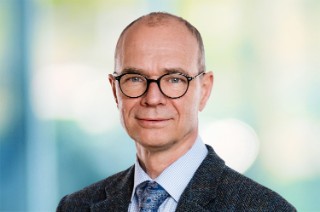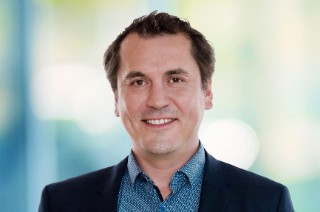High-quality fibers from plastic waste
The project “Textile surface structures” demonstrated in 2024 that high-quality products can also be manufactured from plastic waste – for example, underlay membranes for roofs. These products usually contain nonwovens made of polypropylene (PP) or polyethylene terephthalate (PET). Fraunhofer IVV used a solvent-based process to extract polypropylene (PP) from a polyolefin waste stream. Its high quality meant that it could be processed into PP fibers at Fraunhofer IAP. The cleaned recycled material could be stably spun and processed into multifilament yarn, which demonstrated good textile properties.
The plastic polyethylene terephthalate (PET) was also recycled using solvolysis. After purification at Fraunhofer IAP, the intermediate product BHET (bis(2-hydroxyethyl)terephthalate) was polymerized into new PET and processed into fibers that had an impressively good quality. Both types of fibers obtained from waste materials (PP and PET) were then processed into needle-punched nonwovens to demonstrate that the manufactured fibers could be used in a textile fabric.
Bio-based plastics for demanding applications
Another focus in 2024 was the development of bio-based plastics. The aim is to further develop plant-based plastics so that they are also suitable for demanding applications. The use of bio-based plastics helps to reduce the need for fossil resources, thereby lowering the carbon footprint of plastic products. One example of this is greenhouse films, which are largely made from polyethylene (PE). These films often have a complex structure and are difficult to recycle because they contain various layers and additives, such as UV protection or anti-fogging agents. Developing this application with bio-based plastics such as polybutylene succinate (PBS) is a challenging undertaking, with the guiding principle being the utilization of renewable carbon. The project, which is being carried out in close cooperation with Fraunhofer LBF, is developing modified polybutylene succinates (PBS) that are adapted for use as greenhouse films. In addition to improving processing stability, the goal is to increase weather resistance through the targeted addition of additives.
The transition from a linear to a circular plastics economy can only succeed with a multi-stakeholder approach. For this reason, Fraunhofer CCPE is pooling the expertise and infrastructure of six institutes of the Fraunhofer-Gesellschaft and cooperating closely with partners from industry. Together, they are working on systemic, technical, and social innovations.
Processes, products, and systems are developed, implemented, and optimized for customers and partners from industry and the public sector until they are ready for use and market launch.





